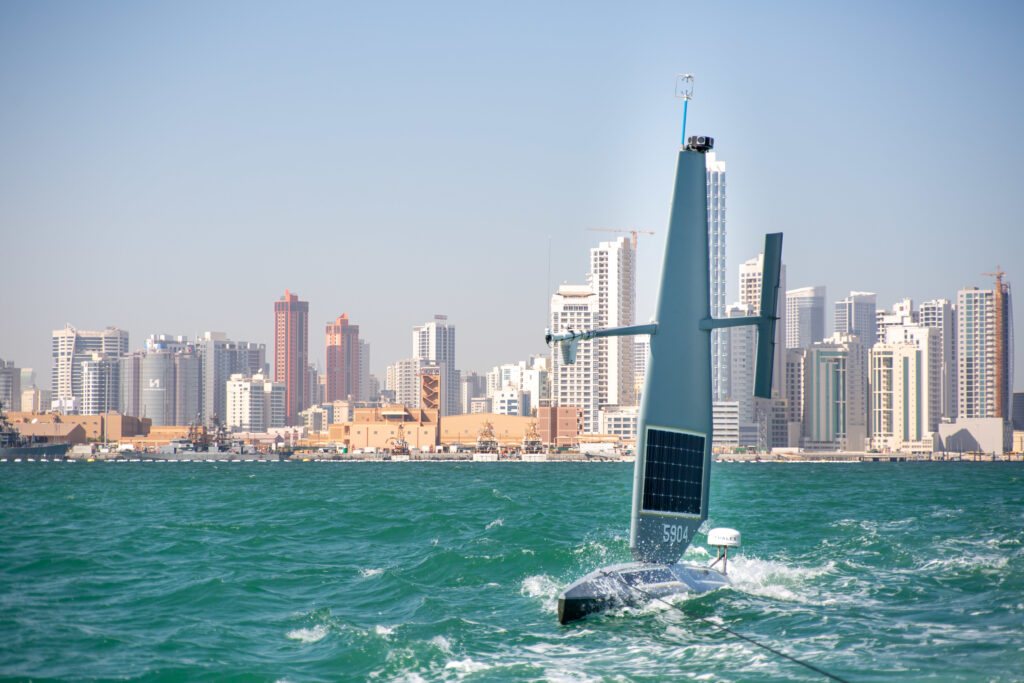
ARLINGTON, Va. — The commander of the U.S. 5th Fleet/Naval Forces Central Command said he is pleased with the results of the experimentation with unmanned vessels and artificial intelligence in his area of operations and predicts a significant expansion of their use in his area of responsibility in the near future.
Vice Adm. Brad Cooper, speaking March 28 in an online discussion sponsored by the Washington think tank the Middle East Institute, said his task force for unmanned vehicle experimentation, Task Force 59, “has exceeded our every expectation.”
Unmanned systems are not new to the 5th Fleet; it has operated RQ-4A Global Hawk surveillance unmanned aerial vehicles and Mk18 mine countermeasures unmanned underwater vehicles for years. But Cooper said the maturation of unmanned surface vessels is relatively new and has enabled a great expansion in their use in the role of maritime domain awareness, allowing his command to “put more eyes out on the water.”
The admiral said by linking two USVs together, they could use “artificial intelligence to map the waters around them … detecting when something is unusual — smuggling, illegal fishing, you name it, and then sending the information back to the command center.
“That process has allowed us to expand our maritime domain awareness two or three times,” he said, noting that with more nations using USVs, the maritime domain awareness in the region could expand to 30 times the coverage.
“Our goal is to have 100 of these USVs patrolling around the waters of the Middle East by the summer of 2023,” Cooper said. “It a heavily partnered effort; it would mostly be an investment by partners. … We’re going to find ourselves in a pretty good spot because the capabilities speak for themselves.”
In January and February, about 80 unmanned systems were deployed in International Maritime Exercise 2022 in scenarios ranging over the Persian Gulf, North Arabian Sea, Gulf of Oman and the Red Sea.
Task Force 59 has accrued more than 7,000 hours of operating USVs. One type of USV stayed at sea for 45 days without need of additional fuel or maintenance.
For example, TF-59 has deployed high-endurance Saildrone USVs, which were controlled from Alameda, California, to patrol the Gulf of Aqaba. In another example, MARTAC provided five of its high-speed USVs for the experiments.
Cooper said for the price of one Arleigh Burke-class guided-missile destroyer, he could buy or lease around 2,000 Saildrone USVs.
- Insitu Going Strong at 30, Focusing on Maritime Operations - April 8, 2024
- Navy Awards Boeing Additional Funds for MQ-25 Drones for Testing - April 3, 2024
- Benign 4th Fleet AOR Useful for Unmanned Vehicle Operationalization, Admiral Says - March 27, 2024






